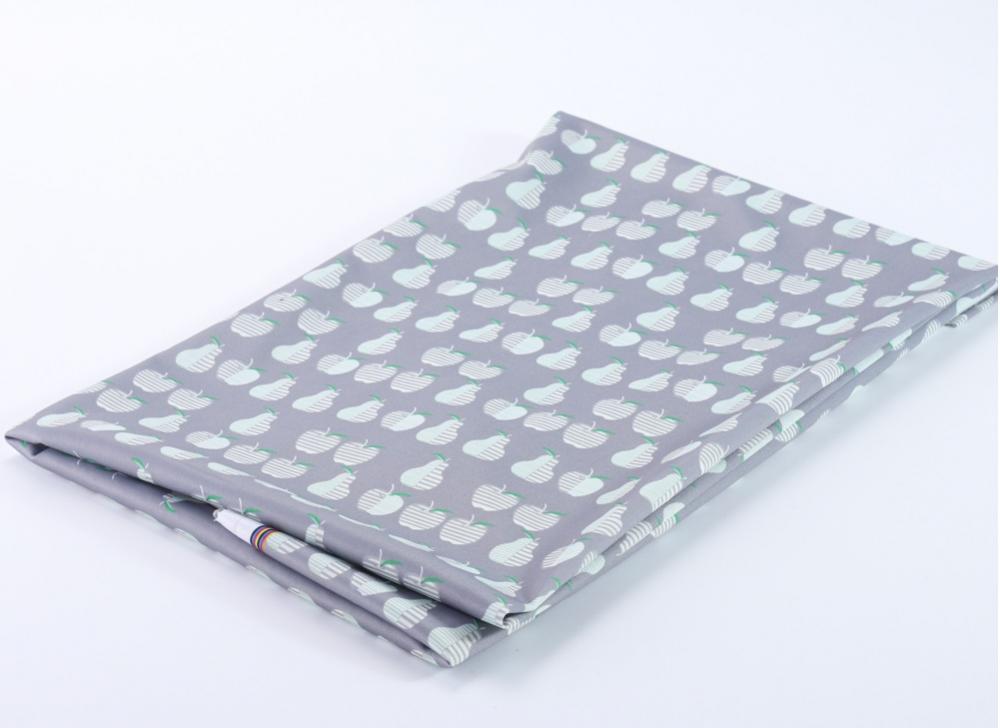In a groundbreaking development, the textile industry is witnessing a remarkable transformation with the introduction of three game-changing fabric technologies: Waterproof Breathable Fabric, Recycled Fabric, and Anti-Static Lining Fabric. These cutting-edge materials are set to revolutionize the market by offering sustainable, functional, and versatile solutions. This article delves into the intricacies of each fabric, explores their individual benefits, and highlights the tremendous potential they hold when combined. With the global demand for sustainable products on the rise, this triumvirate of fabrics is poised to reshape the industry, offering environmentally friendly options without compromising on performance. 1. Waterproof Breathable Fabric : Waterproof Breathable Fabric, often referred to as WB fabric, is a technical textile that allows moisture vapor to escape while preventing water from penetrating the fabric. This innovative material is engineered to provide protection against rain and other external elements while ensuring comfort and breathability for the wearer. WB fabric finds applications in various industries, including outdoor apparel, sportswear, and medical textiles. The technology behind Waterproof Breathable Fabric involves a microporous membrane or coating that acts as a barrier to water droplets, preventing them from seeping through the fabric. Simultaneously, the fabric allows water vapor molecules to pass through, ensuring breathability. This unique combination of properties makes WB fabric ideal for outdoor enthusiasts, athletes, and individuals seeking comfortable and dry clothing options. 2. Recycled Fabric: Recycled Fabric, also known as eco-friendly fabric or reclaimed fabric, is derived from pre-existing materials such as plastic bottles, discarded garments, and industrial waste. This sustainable approach to textile production reduces the environmental impact associated with traditional manufacturing processes, including resource consumption and waste generation. The recycling process involves collecting, sorting, and cleaning the discarded materials, followed by transforming them into fibers that can be spun into yarns and woven into fabrics. The resulting recycled fabric retains the same quality and durability as conventional textiles, making it an excellent alternative for various applications, including clothing, upholstery, and home furnishings. The adoption of recycled fabric not only conserves valuable resources but also contributes to the reduction of greenhouse gas emissions and landfill waste. Furthermore, it helps to address the issue of microplastic pollution by diverting plastic waste from ending up in oceans and landfills. 3. Anti-Static Lining Fabric : Anti-Static Lining Fabric is a specialized textile designed to dissipate static electricity, preventing the accumulation and discharge of electrical charges. This fabric finds extensive use in industries where static electricity poses a risk, such as electronics, automotive, and manufacturing. Static electricity can cause various issues, including damage to sensitive electronic components, fire hazards in explosive environments, and discomfort for individuals wearing garments that cling due to static charges. Anti-Static Lining Fabric addresses these concerns by incorporating conductive fibers or coatings that neutralize static charges, ensuring a safe and comfortable environment. The integration of Anti-Static Lining Fabric into garments and other products not only enhances safety but also minimizes the need for additional anti-static measures, such as grounding straps or wristbands. This fabric is particularly beneficial in environments where electrostatic discharge (ESD) protection is crucial, such as cleanrooms, laboratories, and manufacturing facilities. Combining Forces: The Synergy of Waterproof Breathable, Recycled, and Anti-Static Fabrics (400 words): While each fabric technology presents significant advantages on its own, their true potential is unlocked when combined. Manufacturers are increasingly exploring the possibilities of integrating Waterproof Breathable, Recycled, and Anti-Static fabrics into a single product, creating innovative textiles that offer a range of benefits. One such example is the development of sustainable outdoor apparel that combines Waterproof Breathable Fabric with Recycled Fabric. This fusion not only provides protection against the elements but also reduces the environmental impact by utilizing recycled materials. By incorporating Anti-Static Lining Fabric, these garments can offer additional safety features, especially in situations where static electricity poses a risk. Furthermore, the combination of these fabrics opens up possibilities for new applications. For instance, medical textiles can benefit from the integration of Waterproof Breathable and Anti-Static fabrics, ensuring comfort, protection, and safety for healthcare professionals and patients alike. Similarly, automotive upholstery can be enhanced by incorporating Recycled Fabric and Anti-Static Lining Fabric, offering sustainability and electrostatic discharge mitigation simultaneously. The Future of Sustainable Textiles : The convergence of Waterproof Breathable, Recycled, and Anti-Static fabrics represents a significant step forward in the textile industry's journey towards sustainability. As consumer demand for eco-friendly products continues to rise, manufacturers are compelled to adopt more sustainable practices and materials. The combination of these three fabric technologies presents an opportunity to meet these demands while offering high-performance solutions. To ensure the widespread adoption of these fabrics, it is crucial for manufacturers, governments, and consumers to collaborate. Governments can incentivize the use of sustainable textiles through policies and regulations, while manufacturers must invest in research and development to improve the efficiency and affordability of these fabrics. Consumers, on their part, can drive demand for sustainable products, encouraging manufacturers to prioritize their production. In conclusion, the introduction of Waterproof Breathable, Recycled, and Anti-Static fabrics marks a significant milestone in the textile industry's pursuit of sustainability. These innovative materials offer a range of benefits individually and possess immense potential when combined. By leveraging the unique properties of each fabric, manufacturers can create versatile, functional, and eco-friendly products that meet the evolving needs of consumers while minimizing the environmental impact. As the world embraces sustainability as a core value, these fabrics are poised to shape the future of the textile industry, paving the way for a greener and more responsible approach to manufacturing.




